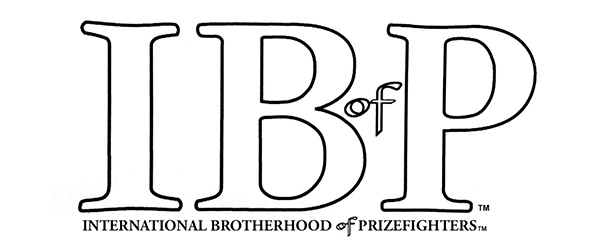Featured Articles
The Fifty Greatest Light-Heavyweights of All Time Part Five – Nos. 10-1

If I have given the impression that I have been a little disappointed in the depth of talent at light-heavyweight, those thoughts can now be banished. Here is a top ten that very nearly put itself together. Harold Johnson drew the short straw and washed up at #11 but him aside there were really no suitors for the top ten that are not ranked within it. Here be dragons.
So listen.
This, is how I have it:
#10 – MATTHEW SAAD MUHAMMAD (49-16-3)
It is both strange and surprising that Matthew Saad Muhammad, born Matt Franklin, has so few in the way of acolytes in this modern era. Muhammad, sometimes, seems to garner less admiration than that which he deserves, despite the fact that he has all the attributes necessary for a fighter to gather fans in excess of his standing.
He’s unquestionably world-class, and proved it against a huge array of talents and styles; he has one of the most compelling backstories in the entire history of boxing (Google if you aren’t familiar with it); and most importantly of all, he was one of the most exciting fighters of his, or any other era. He was like a huge Arturo Gatti with the crucial difference that he tended to hammer his top-ranked foes rather than be hammered by them.
His apprenticeship ended in March of 1977 with a loss to Eddie Mustafa Muhammad, after which he went on a tear through perhaps the most densely packed light-heavyweight division in history.
Matthew Saad Muhammad was matched tough early, and this, combined with either a learned strength drawn from the adversity he experienced in his tragic childhood or an innate toughness born of genetics, meant Muhammad was ready to engage in and emerge victorious from perhaps the most astonishing shootout ever captured on film. Marvin Johnson, a top fifty light-heavyweight in his own right, dug deep to close the class gap he suffered against Muhammad and turn their astonishing 1977 encounter into the most savage brawl ever seen at the weight. Muhammad triumphed after some of the most terrible exchanges in the history of filmed boxing, in the twelfth, leaving the all-but invincible Johnson staggering around the ring like a zombie. The two split just $5,000.
{youtube}UArIOikqodk{/youtube}
Their rematch early in 1979 was another good fight even if it did not quite reach the heights of their first. Muhammad stopped Johnson in eight to lift a light-heavyweight strap. A strap is all he would ever hold. Muhammad never lifted the lineal title, which lay dormant between the departure of Bob Foster and the arrival of Michael Spinks. But Muhammad was the most significant claimant of this time. In addition to Johnson he defeated the excellent Richie Kates in six and twice dispatched the superb Yaqui Lopez in two great fights in eleven and fourteen rounds. John Conteh managed to make the distance in one contest but was slaughtered in four in the rematch; four, too, was the limit for the fearsome Lottie Mwale. Between his 1977 defeat of Johnson and 1981 when the wars caught up with him and Dwight Muhammad Qawi stopped him in ten, he was almost as splendid a light-heavyweight as can be seen.
Almost.
Other top fifty light-heavyweights defeated: John Conteh (#29), Marvin Johnson (#27).
#09 – JIMMY BIVINS (86-25-1)
I’m sorry to play the same old tune but…the heavyweights got him.
In the summer of 1943, weighing 174.75lbs, Bivins was matched over fifteen rounds with the lethal Lloyd Marshall, 164.5lbs, for the duration light-heavyweight title, so named because titlists were able to hold their championship only for the duration of time that the champion – in this case, Gus Lesnevich – was in the armed forces. Marshall, as dangerous a fighter of his poundage as there ever was, and perhaps the best super-middleweight to emerge before that weight division, was coming off twin defeats of Anton Chistoforidis and Ezzard Charles and in the form of his life. Bivins was favoured but much credence was given to the rumours that the two had met in sparring some years earlier, a spar that ended when Bivins had to be rescued from Marshall’s tender attentions. It seemed history would repeat itself, as Marshall came out fast in pocketing the first three rounds, provoking a stern reaction from Bivins who dominated the next three; when Marshall dropped Bivins to take the seventh it seemed another corner had been turned, but Bivins picked himself up, shook himself down and won every remaining round up until the eleventh, which seemed a share. A tired Marshall succumbed to a series of lefts topped off with a vicious right to the cheekbone in the thirteenth.
Then Bivins headed north to the heavyweights, where I rank him at #40. His loss to the history of the light-heayweight division cannot be overstated. Bivins was one of the greatest, and head-to-head one of the most dangerous, light-heavyweights in history.
He was never beaten at the weight. A clutch of heavyweights defeated him while he was weighing in under 175lbs, but that does not concern us here. Anton Christoforidis bested him at middleweight – but in his prime years of 1941, 1942 and 1943, spent almost exclusively at and around the light-heavyweight limit, Bivins ran 14-0 against other light-heavyweights. The level of competition he bested was extraordinary.
In 1941, he defeated, among others, the great Teddy Yarosz, the deadly Curtis Sheppard and Nate Bolden. In 1942 he defeated former middleweight strapholder Billy Soose, reigning light-heavyweight champion Gus Lesnevich (in a non-title fight) and future champion Joey Maxim. In 1943, he dropped the legendary Ezzard Charles seven times on his way to a ten round decision victory; former champion Anton Christoforidis over fifteen rounds; and the deadly Marshall.
For those keeping score, that is a little better than a champion a year, more if you allow middleweight title claims. Bivins was a wrecking machine at 175lbs. He was monstrous.
He did great work at heavyweight too, but that work concentrated at the lighter poundage would have made one of the very greatest 175lb careers.
Of course the #9 slot is nothing to be sniffed at – but one of the many areas where light-heavyweight is marked different from heavyweight is the distinctive differences between the #3 slot and the #9 slot. Probably the former was not out with Jimmy’s grasp. The latter, he very much earned.
Other top fifty light-heavyweights defeated: Anton Christoforidis (48), Gus Lesnevich (39), Joey Maxim (33), Lloyd Marshall (18), Ezzard Charles, (Top Ten).
#8 BOB FOSTER (56-8-1)
A heavyweight a year beat the tar out of Bob Foster up until his 1965 dull but one-sided loss to Zora Folley. Earlier, thrashings at the hands of Ernie Terrell and Doug Jones convinced him, I think, that light-heavyweight was the division for him. The result was one of the greatest title-runs in light-heavyweight history.
This was despite the fact that champion Jose Torres was less than keen on meeting him in the ring. When middleweight legend Dick Tiger stepped up to light-heavyweight, Foster smelled his chance. Tiger had, as he saw it, been frozen out of the middleweight title picture before moving north and had the will and heart to step in with any man. When Tiger retained in a rematch with Torres and Foster blasted out the superb Eddie Cotton in just two rounds, the fight was imminent.
Foster summarised his stylings beautifully after his destruction of Cotton as “jab, jab, jab, then wham!” This sounds too basic to be true of a legitimate all-time great, but it is the essence of Foster’s strategy. Technically proficient without being a true technician, he was gifted with height and reach but took true advantage of neither, fighting in a strange crouched posture that undervalued his 6’3 frame. The point was, Foster wanted to make his opponents hittable. Whether that was through controlling them with his world-class jab to create openings or through initiating exchanges out of which he always – always – emerged victorious, making punching opportunities was the key to his style. This is because Foster is, perhaps, the hardest p4p puncher in the history of boxing.
That point is arguable, but it is also true that those arguments mean little. The truly great punchers are not survivable. Debating who was the more deadly puncher pound-for-pound between Bob Foster and Sam Langford is a little like arguing about what kind nuclear warhead will leave you more deceased. The handful of punchers that lie at the absolute top of the power tree hit people and those people fall asleep.
Tiger fell asleep when he put the title on the line against Foster. Tiger hadn’t been knocked out in ten years of title fights; Foster knocked him out completely. Unaware that he had visited the canvas Tiger spoke only of darkness and silence. The reign of terror had begun.
Foster’s level of competition is sometimes criticised and in this type of company you can understand why. It is true that his was not an era that provided great opposition, but interestingly there were granite chins in abundance. Chris Finnegan had been stopped before, on cuts – but the devastating one-two Foster laid him low with saw him counted out, lurching in the ropes, his brave attempt at Foster ending in a disaster for his brainstem. Frank DePaula was stopped just twice in his career, but Foster turned the trick in a single round with a crackling right uppercut. No softening his man up; no wearing his man down – when he lands, it’s over. Henry Hank lost thirty-one fights in his career but Foster was the only fighter able to stop him. Mark Tessman was stopped only once by concussion and that concussion was inflicted by Foster’s punches. “Punch resistance” was a meaningless phrase for any light-heavyweight that shared the ring with Foster. The only way to survive was to avoid being hit.
Foster lost to a 180lb Mauro Mina when he was 11-1. No other light-heavyweight defeated him. He was 15-0 in title fights. His reign lasted seven years. While Bivins and Muhammad defeated far and away the better opposition, Foster’s total dominance of the division and my sneaking suspicion that Foster would have poleaxed even those great men, sees him sneak in here ahead of both.
Other top fifty light-heavyweights defeated: None
#07 – JOHN HENRY LEWIS (97-10-4)
John Henry Lewis met Maxie Rosenbloom on four separate occasions and the end result was 2-2. But in the two matches that Lewis lost, the men weighed in as heavyweights; Lewis tipped the scale at 182 and 186lbs respectively. When these two elite light-heavies met nearer the light-heavyweight limit, there was only one winner and that was Lewis. What surprises here is that Maxie Rosenbloom was the light-heavyweight champion of the world for these two ten-round non-title meetings, and that John Henry Lewis was a teenager. In fact, he was still at high-school. It didn’t stop him dropping Rosenbloom with a right to the jaw in the first and a left to the kidney in the second in their second meeting in the summer of 1937. Dominating the incumbent champion and then dealing with school the very next day marked Lewis out as something special as he had always been marked out as something special. He first pulled on the gloves as a toddler. He turned professional as a middleweight aged just seventeen. And although he had to wait two years after first defeating Rosenbloom to get his hands on a world champion in a title fight, when he did so he didn’t miss that chance, out-pointing Bob Olin (who had taken the title from Rosenbloom a year earlier) over fifteen in October of 1935. Lewis had already beaten Olin; and Tony Shucco and Young Firpo and Lou Scozza and Rosenbloom. His resume, before he even came to the title, was excellent. Over the coming years he would turn it into something truly extraordinary.
His first defence was staged against #2 contender Jock McAvoy. Lewis, still just twenty-one years old, turned in a performance great maturity and ring-craft, jabbing and counter-punching his way to a decision booed by the crowd for its efficiency rather than any sense that McAvoy had been cheated. Len Harvey, the British and Commonwealth champion was next for a tilt at the title, but before travelling to London to master him, Lewis found the time to dust off Tony Shucco, Al Gainer and former strapholder Bob Godwin, his level of competition remaining outrageously high.
His next defence was a little softer, granting faded ex-champion Bob Olin the rematch he craved and putting him away in eight rounds. “He is the perfect boxer…the best boxer in the world,” Olin later said of his old foe. “He’s fast on his feet with full knowledge of all the scientific departments of the game.” Presumably Emilio Martinez would have agreed with him, succumbing in four rounds, before the perennially ranked Al Gainer pushed him harder over fifteen late in 1938. A late rally protected his title and ensured that he would retire the undefeated light-heavyweight champion of the world. Lewis didn’t just go unbeaten as champion though; he went undefeated at 175lbs. He was never beaten in a match made within 5lbs of the light-heavyweight limit. He was invincible there, dominating a tough era with speedy boxing, a superb left hand and an innate toughness that was only ever beaten from him by heavyweight champion Joe Louis, who stopped him for the first and only time in his career in 1939. Lewis retired shortly thereafter, his eyesight failing him.
One imagines the division let out a collective sigh of relief. Lewis had terrorised it.
Other top fifty light-heavyweights defeated: Al Gainer (#38), Tiger Jack Fox (#25), Maxie Rosenbloom (#15)
#06 – TOMMY LOUGHRAN (90-25-10; Newspaper Decisions 32-7-3)
A thread has run through this series on the greatest 175lb fighters of all time and that thread is my regular disagreement with history. Whether it’s Sam Langford, the great men of the pre 175lb era generally counted lightheavies by traditionalists or the thorny issues of Billy Conn and Battling Levinsky, I’ve found myself on the rough side of apparent historical truth on numerous occasions. Here, at the sharpest of sharp ends, my trickle of truth finds its way to history’s raging torrent. I add my modest voice to a chorus of more famous names in saying:
Tommy Loughran was one of the greatest pugilists of all time.
Nat Fleischer ranks him at #4, all time, as did legendary boxing man Charley Rose; the IBRO ranks him #6. He appeared at #6, too, on Boxing Scene’s top twenty-five and that is where he is ranked here. This kind of greatness lies on a distant shore and Loughran inarguably belongs there. Simply put, it is impossible to have a list of ten light-heavyweights without placing Loughran somewhere upon it. He was that special, and he proved it.
He proved it first with his record of note standing at just nineteen years old when he was slung in against the immortal Harry Greb. Loughran lost, inevitably, over eight rounds but he won admirers in doing so and impressed with his performance in the opening two rounds and in a sudden desperate rally in the last. He even managed to cut Greb, who spoke in glowing terms of the prospect.
So Loughran matched Gene Tunney.
Again, he did so over eight rounds in a fight generally held to be a draw in 2015. “Not many boxers could outbox Tunney at this stage of his career,” wrote Tunney biographer Jack Cavanaugh. “But Loughran was one of them.”
This statement is far from inarguable but it bears examination. Tunney was one of the very best boxers of his era and is regarded to this day as one of the finest boxers of all time; Loughran, on the other hand, was a teenager. But he was a teenager with perhaps the most cultured, brilliant left hand in history. I’ll say that again: it is possible that the fighter blessed with a better left than Tommy Loughran is yet to be born.
Whatever the details it is a fact that once Loughran made it out of his teens and into his prime, Gene Tunney took nothing more to do with Tommy Loughran. One man who never shirked a challenge, however, was Harry Greb. Loughran fought Greb on a further four occasions, going 1-1-2, defeating him over ten rounds in October of 1923 in a rough contest from which Loughran emerged with the decision via a stern and consistent body-attack.
Most of the other luminaries of the era fell to him too, including Mike McTigue (from whom he took the light-heavyweight title), Jimmy Delaney, Georges Carpantier, Jimmy Slattery, Young Stribling, Leo Lomski, Pete Latzo, Jim Braddock, at which point, as the reader will be unsurprised to hear, the heavyweights got him.
But not before Loughran had staged the fifth of his six victorious world-title fights against Mickey Walker. This was not just a special fight because Walker was so outstanding but also because readily available film survives. Walker, a nightmare for boxers even up at heavyweight, was handled by Loughran. Mickey’s strategy against his timeless jab was to dip and bulldoze but Loughran just tucks his right hand in behind the former middleweight champion’s elbow, adding a superb body attack to his effortless outside game. So successful is this strategy that Loughran begins to feint with the jab to open up the body, and soon Mickey is moving back; Loughran adjusts, re-arranges his jab, throws it, and opens up Mickey’s body again.
Loughran has no qualms about holding Walker while he hits him, he was no saint, but when Walker dips and lifts driving his head into Loughran’s, chin he makes no complaints. He was a shotgun stylist, a renaissance painter who made art with a surgeon’s blade.
Let’s meet the men who keep him from the top five.
Other top fifty light-heavyweights defeated: Mickey Walker (#36), Jimmy Slattery (#34), Young Stribling (#23), Jimmy Delaney (#14), Harry Greb (Top 10).
#05 – MICHAEL SPINKS (31-1)
As I wrote in Part Four, when contenders passed Dwight Muhammad Qawi they did so on tiptoe, and holding their breath. He was a monster. Two months before Spinks was to take to the ring with this monster, his common-law wife and the mother of his young daughter was killed in a car accident. Just days before the fight he wept openly in front of members of the press – and on the night of the fight?
Nothing.
No glimmer of emotion. Here was a man in absolute control of himself, a professional.
“I live the life of a fighter. I program myself as a fighter.”
Spinks assumed absolute control in the ring, and when his control was challenged he had the tools to equalise the situation with extreme prejudice. Marvin Johnson challenged him, as Marvin Johnson was wont to do, in March of 1981, directly attacking Spinks, and arguably winning all three of the opening rounds in doing so. Spinks backed up, appraised his man, and then delivered an uppercut so brutal that Johnson was unable to continue in its wake. This is the same Marvin Johnson, it should be remembered, that Matthew Saad Muhammad was unable to lay low with three dozen flush power-punches.
So Spinks could be as destructive as he was brilliant, and he was certainly brilliant. When he got to the ring containing Qawi in March of 1983, at stake, the lineal light-heavyweight championship of the world, not only did he show no fear but he showed that brilliance. He dominated Qawi with his jab, and if that brutal sawn-off shotgun of a fighter had his successes against Spinks, there was only one winner. From distance he crackled jabs around Qawi’s head, and when Qawi drew close he found clubbing right hands from an elevated position and a guard-splitting uppercut that snapped the smaller man’s head back repeatedly.
But most of all he controlled Qawi, he forced Qawi to fight his fight, he forced Qawi to jab with him by making himself unavailable for other punches, with cunning, beautifully judged distancing. Malleable in the extreme, his style appeared to be that of a technician, but he had a disjointed approach to building momentum that left rhythm-breakers useless and made learned skills of no practical value to a certain kind of fighter. There are few clues as to what Spinks will throw next.
This occasionally made opponents cautious and led to boring matches where Spinks neglected to take unnecessary chances and his opponents neglect to take any. But he was as capable of the explosive and unexpected as he was of the prosaic.
He staged four defences of the lineal title he finessed and clubbed from Qawi before abandoning it for the heavyweight division, undefeated at 175lbs. There is no company in which Spinks need bow his head – there are other light-heavyweights in his class, but none in excess of it. In some imaginary light-heavyweight maelstrom of greatness, a division made up of the top ten described here, he would excel – if I were betting a single coin on who would emerge as the champion, I might just put it on Spinks.
Other top fifty light-heavyweights defeated: Dwight Muhammad Qawi (#21), Marvin Johnson (#27), Eddie Mustafa Muhammad (#32).
#04 – GENE TUNNEY (65-1-1; Newspaper Decisions 14-0-3)
I’m not convinced, entirely, that Gene Tunney belongs above the likes of Michael Spinks and Tommy Loughran. What tipped the balance in the end is their respective paper records. Loughran slipped up a few times. Tunney was defeated just once.
And that defeat could hardly be deemed “a slip up.” Tunney lost to Harry Greb, past his absolute prime but still phenomenally dangerous and on the night of the first of five meetings between the two, Greb thrashed Tunney as brutally as he ever thrashed any man; both boxers and the referee finished the contest covered in Tunney’s blood.
The blood was not blue. Tunney’s beginnings were typically working class. But he would raise himself, partly through boxing, all the way to the summit of what passed for American aristocracy, the walking embodiment of the American Dream. Tunney knew that what the US loved most was a winner – this meant that Tunney had to find a way to do the seemingly impossible: he had to find a way to defeat Harry Greb.
He got his first chance to do so nine months later in Madison Square Garden, the site of his ritual slaughter in the first fight, and the officials thought he did enough – Tunney was awarded a split decision victory over fifteen rounds. The result remains one of the most controversial in boxing history. One time trainer of the legendary John Sullivan and the first chairman of the New York State Athletic Commission William Muldoon named the decision “unjustifiable.” Of twenty-three newspapermen polled at ringside, only four found for Tunney; the New York herald went further than many naming the decision “the most outrageous ever awarded in New York.” It is arguable that Tunney did not, then, achieve an unfettered victory in the first rematch, but in the second rematch, their third fight, at the end of 1923, Tunney achieved victory. In September of 1924 the two boxed a draw in their fourth and final fight at the light-heavyweight limit.
Tunney was a Rolls-Royce of a fighter, beautifully balanced with an exquisite left, a digging right (he scored a sizeable number of knockouts with that punch at the weight), he was a solid body-puncher and a world-class counter-puncher. It was a combination that saw him defeat every light-heavyweight he ever met, bar none, Leo Houck, Battling Levinsky, Fay Kesier, Jimmy Delaney and Georges Carpantier among them.
Other top fifty light-heavyweights defeated: Battling Levinsky (#27), Jimmy Delaney (#14), Harry Greb (Top 10).
#03 – HARRY GREB (107-8-3; Newspaper Decisions 155-9-15)
I suspect that Harry Greb’s high placement above, even, Gene Tunney, may cause some consternation among readers. The internet is awash with accounts of his thousand-glove attack and his supernatural speed, so allow me, instead, to take a purely statistical approach in defence of Greb’s placement.
There are forty-nine other men listed on this top fifty at 175lbs. Greb beat ten of them. In other words, he defeated 20% of the men on this list – nobody, nobody listed above and nobody listed below come anywhere near this statistically. Nor is it the case that Greb cornered past or pre-prime versions of these men. On the contrary, he fought, for the most part, series with each of them over the course of their careers. He gave Jack Dillon two chances at him, beating him firmly the first time and thrashing him the second; Jack Delaney got a second chance but ran 2-0; Tommy Loughran, who shared Greb’s prime, was rewarded with five shots at the great man and for the most part he was beaten firmly. Battling Levinsky received no fewer than six shots at Greb, mostly in no decision contests and in every one of them the newspapermen in attendance favoured the Pittsburgh man. Harry Greb may have been the most dominant fighter in history, and he did a huge swathe of his best work at light-heavyweight.
As for his losses at 175lbs, despite meeting the highest level of competition of any light-heavyweight in history, they were few and far between and often inflicted in what may politely be referred to as “circumstances.” He met the deadly Kid Norfolk on two occasions, getting the best of him first time around only to find himself disqualified in a second contest marred by brutal fouling by both men – eye-witness accounts almost universally decry the disqualifying of Greb but not Norfolk as ridiculous. As we have seen, Gene Tunney holds a legitimate victory over him, winning their December 1923 contest by most sources, but his victory from February of that year is disputed.
Greb twice defeated Tommy Gibbons within the 175lbs limit, but did also drop a decision to him; Loughran managed to win one out of six against “The Pittsburgh Windmill.” He has three legitimate losses at the weight all against all-time greats listed in the top twelve here, men who he also defeated. In total, he holds wins against seven men from the top twenty.
What is disturbing about Greb’s body of work at 175lbs is that even if you removed for some obscure reason his five most significant wins, he would still be bound to the top twenty by his resume, which would very probably remain superior to that of Matthew Saad Muhammad or Roy Jones. Small for a light-heavyweight and famously a fighter of whom no film appears to have survived, his head-to-head ability is inferred by his overwhelmingly positive results against all-time greats, including those of a very modern appearance, like Tommy Loughran and Tommy Gibbons.
Rather than questioning whether or not Greb belongs in the top three, I submit that his absence from the top two is a better cause for curiosity.
Other top fifty light-heavyweights defeated: Billy Miske (#44), Jimmy Slattery (#34), Battling Levinsky (#27), Kid Norfolk (#20), Jack Dillon (#19), Maxie Rosenbloom (#15), Jimmy Delaney (#14), Tommy Gibbons (#12), Tommy Loughran (Top Ten), Gene Tunney (Top Ten).
#02 – ARCHIE MOORE (185-23-10)
There’s a two-pronged response to the question as to Greb’s placement outside the top two, and the first part of that answer is “Ancient” Archie Moore, the Mongoose. Of course, he wasn’t always ancient but Moore served his lengthy and extreme apprenticeship in the middleweight division before dual losses to the legendary Charley Burley and the mercurial Eddie Booker sent him scampering north to the light-heavyweight division aged twenty-eight. Holman Williams, one of the true monsters of the Murderer’s Row that haunted Moore, elected to follow him and took from him the narrowest of decisions; Moore showed the determination that would carry him to the absolute outer reaches of what is possible for a fighting man in re-matching Williams and becoming only the second man to score a stoppage over one of the best pure-boxers of that or any other era. Moore, as we recognise him today, had arrived.
He became the second man, too, to score a knockout over Jack Chase, another shadowy destroyer from the absurd depths of the middleweight division that now lay below him, defeated Billy Smith, the monster who dispatched Harold Johnson with a single punch – Moore’s own domination of the great Johnson began shortly thereafter. There were disasters, too – the one round knockout loss to Leonard Morrow, although avenged, is hurtful and there were DQ losses that leads one to question what would become one of the great ring temperaments, but it is a fact that Moore had yet to summit at 175lbs. Arguments about whether or not he would actually improve as a fighter are for another day, but what is inarguable fact is that Moore did not come to the light-heavyweight title until late 1952. He was thirty-six years old.
The key, I think, to Moore’s emergence from a pack of fighters to whom he did not prove his inherent superiority (Charley Burley, Holman Williams, Jack Chase, et al) was his ability, perhaps unparalleled, to mount campaigns at heavyweight and light-heavyweight simultaneously. From almost the moment he stepped up to light-heavy he was making matches, too, north of that weight. Moore was using the heavyweights as a tool, I suspect, to enhance his standing as a light-heavyweight, as well as one by which to procure cash.
Whatever the details, his strategy worked and once Moore finally succeeded in getting his opponent into the ring he did not let him off the hook. Maxim fought with astonishing heart, but it is likely that the only round he won was the fourth, awarded to him by the referee after Moore landed a low-blow. That low blow aside, it was a perfect performance and one of the best title-winning efforts on film. Down the years Moore has somehow become perceived by many as a counter-puncher, a fighter who fought in a shell rather like James Toney, waiting for and then pouncing upon chances created by his opponent’s mistakes. Nothing could be further from the truth. Moore was aggressive, marauding but never cavalier. Maxim, easy to hit but hard to hit clean, was just target practice for the Mongoose. He found the gaps that represented half-chances for other fights and made fulsome opportunities of them. His left hook, as short a punch of its kind as can be seen, became a cover for his step in, an industrial elevator of a punch starting at the hip and terminating – well, anywhere, in a singular swift motion. His sneak right which in the first round was a clipping, careful punch, was, by the end of the fight, a steaming dynamo of a punch and one that left the granite-chinned Maxim reeling. Inside, Moore dominated with sniping uppercuts and a savage two-handed body-attack.
By the end, Maxim was desperate. Chewed upon the inside, stiffened by winging punches on the outside, it is great testimony to his heart that he survived the championship rounds. The reign of the greatest ever light-heavyweight champion had begun.
His reign lasted nine years and spanned ten title fights in which Moore went 10-0. These included his astonishing defeat of Yvon Durelle in which he was battered to the canvas three times in the first round and once more in the fifth; of course he survived, of course he stopped Durelle in the eleventh – he had the heart of a lion and the soul of an antique lighthouse. He was in his forty-fourth year. At the time of his final defence against Giulio Rinaldi, he was in his forty-sixth. Moore did not carry out this miracle, like the astonishing Bernard Hopkins, in an era of universal healthcare for fighters who went out twice a year. He did it in an era during which African-American pugilists spent the night before their latest fight in the barn-loft of a local promoter and went out nine times in a year, as Moore did in 1945.
His astounding longevity in tandem with the greatest reign in light-heavyweight history has him near the very pinnacle of this list. All that keeps him from the #1 spot is his very own demon.
Other top fifty light-heavyweights defeated: Joey Maxim (#33), Lloyd Marshall (#17), Harold Johnson (#11), Jimmy Bivins (Top Ten).
#01 – EZZARD CHARLES (95-25-1)
Moore didn’t like to talk about Ezzard Charles. He loved to talk about Charley Burley. He often expressed his admiration for Rocky Marciano and Eddie Booker and his dislike of Jimmy Bivins. But he did not talk much about Ezzard Charles.
Telling ghost stories is no fun if you live in a haunted house.
The two met first in the spring of 1946 in a fight which was not particularly competitive. Charles was so much better than Moore that referee Ernie Sesto scored the fight ten rounds to zero in Ezzard’s favour; each of the judges found a single round for the Mongoose. It was skill that did it that night and a jab that Moore must have found himself trying to slip in his sleep.
Almost a year to the day after their first meeting they clashed again. Between their first and second meeting they had defeated, between them, Billy Smith, Jack Chase, Jimmy Bivins, Lloyd Marshall and a clutch of other decent fighters. They were untouchable, but to one another. The rematch was closer, so close that Moore could almost touch the win but the result was a majority decision loss, one judge favouring the draw. The deciding factor was likely a single punch, a left hook to the body which dropped Moore in the seventh and caused him to stall thereafter.
Moore was a giant of a fighter but nothing beat larger or stronger within him than his heart. Inevitably he would seek out a third shot at Charles and inevitably Charles would accommodate him. Here was Moore’s moment and he was determined not to let it slip. He began cautiously, boxing defensively, leading at the beginning of the eighth in the main because Charles had two rounds taken from him due to borderline low-blows, but in that fatal three minutes, he opened up in earnest. He jabbed to Ezzard’s mouth and Charles began to bleed. He whipped over that sneaky left hook to Ezzard’s ear and Charles was staggered. That crackling right-hand whipped through and Ezzard was staggered again.
On the cusp of defeat, Charles rescued himself and sealed his greatness forever. Some will even tell you that what followed was nothing less than the springing of a trap that called for him first to be hit and hurt. The two piece that he landed in desperate retort began with a left hook to the temple but the right-hand that followed was described by Pittsburgh journalist Harry Keck as “seeming to travel a complete circle” before it cracked home on Archie’s chin. It was a punch that Moore later claimed he had not seen, and knew nothing of, except darkness.
So there he stands, Ezzard Charles, close to darkness himself, wide-eyed over the quivering form of a detonated nervous system that will in a matter of moments belong again to Archie Moore, unassailable in his greatness. Three times Moore stepped to him and three times Charles defeated him. In the second and third confrontations this difference was arguably a single punch, the fine line between #1 and #2, no more and no less than that.
For despite Moore’s incredible age-defying title reign, he cannot be placed here above Charles. Imagine for a second what it would mean for Joe Louis had he three times defeated Muhammad Ali. There would be no more arguments about which of these two belongs at the top of the heavyweight tree. It is true that Charles did not achieve all that Moore did in the light-heavyweight division. In the aftermath of his knockout of Moore he was labelled a certainty to receive a title shot but Lesnevich, naturally, ducked. In a sense he can hardly be blamed. The single fight film to have emerged of the light-heavyweight Charles is terrifying. Fast, poised, deadly, with a body attack even more savage than Moore he appears unboxable. A fighter as special as Lloyd Marshall seems a boy to a man.
So inevitably, the heavyweights beckoned for the denied light-heavyweight contender and he excelled there too becoming the heavyweight champion of the world, but not before he had defeated, mostly in a dominant fashion, the great names amassed in the greatest light-heavyweight division, including Teddy Yarosz, former middleweight titlist Ken Overlin, light-heavyweight champion Joey Maxim, light-heavyweight champion Anton Christoforidis, the legendary Lloyd Marshall, Jimmy Bivins, Oakland Billy Smith and a swathe of other contenders.
He did not show the spooky longevity of Moore and nor was he permitted to lay a claim to the light-heavyweight title so many great men would throw aloft before and after him, but he did prove beyond all hope of contradiction his inarguable superiority to Archie Moore. This, in tandem with the other fighters he laid low at the weight, is enough to make him the greatest exponent of the fistic art ever to weigh in at 175lbs.
For those of you who have taken the time to read this series of articles from the first word to the last: I thank you.
Other top fifty light-heavyweights defeated: Anton Christoforidis (#48), Joey Maxin (#33), Llloyd Marshall (#17), Jimmy Bivins (Top Ten), Archie Moore (Top Ten).
Featured Articles
Another Victory for Ukraine as Berinchyk Upsets Navarrete in San Diego
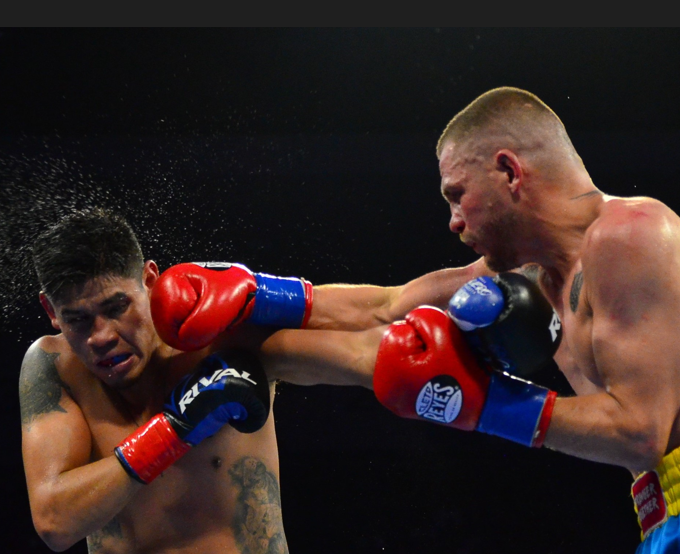
Whether it was inspiration or perspiration, Ukraine’s Denys Berinchyk motored past Mexico’s Emanuel Navarrete by split decision to become the WBO lightweight world titlist on Saturday.
Just hours after his fellow countryman Oleksandr Usyk became undisputed heavyweight world champion, Berinchyk joined the club.
“This is a great night for all people of Ukraine,” Berinchyk said.
The undefeated Ukrainian Berinchyk (19-0, 9 KOs) gutted out a win over Navarrete (38-2-1, 31 KOs) who was attempting to join Mexico’s four-division world champion club in San Diego. The lanky fighter known as “Vaquero” fell a little short.
Through all 12 rounds neither fighter was able to dominate and neither was able to score a knockdown. Just when it seemed one fighter gathered enough momentum, the other fighter would rally.
A butt caused a slight cut on Navarrete in the 10th round. That seemed to ignite anger from the Mexican fighter and he powered through the Ukrainian fighter the next two rounds.
In the final round Berinchyk bore down and slugged it out with the Mexican fighter as both relied on their weapons of choice. For most of the night Navarrete scored with long-range uppercuts and Berinchyk scored with overhand rights.
After 12 rounds two judges scored it 115-113, 116-112 for Berinchyk and one 116-112 for Navarrete. Ukraine gained its third world titlist in one a week. Berinchyk joins Usyk and Vasyl Lomachenko as world titlists.
“He’s a very tough guy,” said Berinchyk of Navarrete.
Welterweights
A battle between undefeated welterweights saw Brian Norman (26-0, 20 KOs) knock out Giovany Santillan (32-1, 17 KOs) in the 10th round to become the interim WBO titlist.
For nine rounds both welterweights engaged in brutal inside warfare as each tried to beat the sense out of each other.
Norman worked the body early as Santillan targeted the head. Neither fought more than two inches from each other.
The younger Norman, 23, connected with a right cross during an exchange that wobbled Santillan in the eighth round. From that point on the Georgia fighter began setting up for his power shots. Finally, in the 10th round, uppercuts dropped Santillan twice. In the second knockdown Santillan went down hard as referee Ray Corona stopped the fight immediately at 1:33 of the 10th round.
Other Bouts
Heavyweight Richard Torrez (10-0, 10 KOs) knocked out Brandon Moore (14-1) in the fifth round for a regional title.
Lightweight Alan Garcia (10-0) defeated Wilfredo Flores (10-3-1) by decision after eight.
Photo credit: German Villasenor
To comment on this story in the Fight Forum CLICK HERE
Featured Articles
UNDISPUTED ! – Usyk Defeats Fury ! – Plus Undercard Results from Riyadh
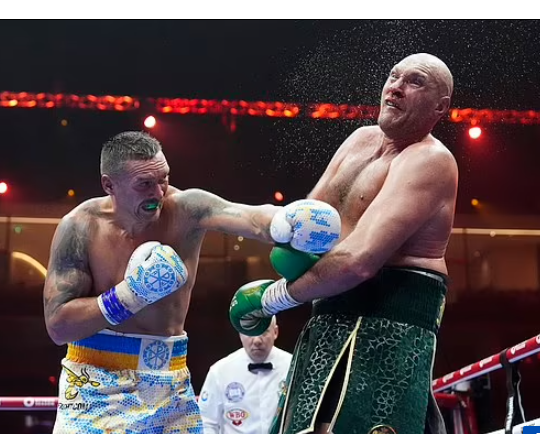
The most ballyhooed fight of the young century played out today at Riyadh Arena in the Kingdom of Saudi Arabia where Ukraine’s amazing Oleksandr Usyk became an undisputed world champion in a second weight class with a split decision over WBC and lineal heavyweight champion Tyson Fury.
This was a memorable fight with twists and turns. Usyk had some good moments early, but the middle rounds belonged to the Gypsy King. Heading into the second half of the bout, the old saying that a good big man will always beat a good little man, appeared to be holding up once again. Fury was having good success working the body as his trainer SugarHill Steward exhorted him to do, and when he went upstairs, he rattled Usyk, notably in round five when a big uppercut appeared to lift the Ukrainian off his feet. But Usyk finished round seven strong, a prelude of what was to come.
Usyk plainly won round eight and in round nine, he came within a whisper of ending it. A flurry of punches sent Fury reeling. He crashed into the ring ropes which dictated a standing-8 count from referee Mark Nelson. If Nelson had waited a few more seconds, he would have likely waved the fight off as Fury was on queer street. But this dramatic turnaround came late in the round and the Gypsy King was saved by the bell.
Among other things, Tyson Fury is known for his amazing powers of recuperation. He not only stayed the course, but appeared to win the final round. But in the end, Oleksandr Usyk, now 22-0 (14) saddled Fury (34-1-1) with his first defeat. Two of the judges favored him (115-112, 114-113) with the dissenter scoring it for Fury 114-113.
A draw wouldn’t have caused much of a stink and now they will do it again. The sequel is tentatively scheduled for October. Both are getting a little long in the tooth – Usyk is 37 and Fury is 35 – so we will be surprised if the rematch lives up to the hype.
Semi-wind-up
The first encounter between Jai Opetaia and Mairis Briedis was a grueling fight. Opetaia, an Australian Olympian at age 16, won the battle (a fair decision) but yet took the worst of it. Early in that bout, he had his jaw fractured in two places and for the next two months was forced to eat out of a straw.
The rematch tonight in Riyadh was a monotonous fight through the first nine rounds. Briedis, now 39 years old and inactive since their first meeting, looked old and rusty. But the fight heated up in round 10 and the championship rounds belonged to the Latvian.
It came too little, too late, however, as Briedis needed a knockout to win. At the conclusion, the judges favored the Aussie by scores of 117-111 and 116-112 twice.
Opetaia, 28, improved to 25-0 (19). Briedis, who has defeated everyone that he has fought with the exceptions of Opetaia and Oleksandr Usyk (and the Usyk fight was close) falls to 28-3.
The first fight between Opetaia and Briedis was for the IBF cruiserweight title. Tonight’s match is for the vacant IBF cruiserweight title (don’t ask).
Cordina-Cacace
In a major upset, Belfast’s Anthony Cacace, a 12-year pro, captured the IBF 130-pound world title with a seventh-round stoppage of previously undefeated Joe Cordina who went to post a consensus 7/1 favorite. The end came 39 seconds into round seven with Cacace pummeling Cordina against the ropes.
The Irishman was the busier fighter and landed the harder punches, but the bout was not without controversy. In the third frame, Cacace stunned Cordina with a punch that landed after the referee ordered the fighters to break. That put Cordina on the defensive and before the round was over, Cacace put him on the canvas with a wicked uppercut and Cordina, badly hurt, barely survived the round. Cacace (22-1, 8 KOs) had a big sixth round and closed the show in the next stanza.
Cordina, a 2016 Olympian who was undefeated in 17 pro fights heading in, is a close friend and frequent workout partner of Lauren Price who captured the WBC female welterweight title last week. She now stands alone as the only current world champion from Wales.
Kabayel-Sanchez
In a mild upset, Agit Kabayel continued his late career surge with a seventh-round KO of previously undefeated Frank Sanchez. As was the case in his last fight when he upset Arslanbek Makhmudov, Kabayel (25-0, 17 KOs) finished his opponent with body punches. A left-right combination knocked Sanchez to his knees and then, after Sanchez got to his feet, a straight right to the belly sent him down again and he wasn’t able to beat the count.
Sanchez, who was 24-0 heading in, entered the bout with a brace over his right knee that compromised his mobility. Kabayel, the aggressor throughout, was comfortably ahead at the time of the stoppage. The official time was 2:23 of round seven.
Kovalev-Safar
In a dull 10-rounder, unsung Robin Safar, a Swedish-born fighter of Kurdish descent, may have written the finish for the career of Sergey Kovalev. At age 41 in his second fight as a cruiserweight and coming off a two-year layoff, the “Krusher” was a pale imitation of the fighter that won nine straight light heavyweight title fights before losing a controversial decision to Andre Ward in their first encounter.
Safar, who improved to 17-0 (12) punctuated his triumph by knocking down Kovalev (35-5-1) with a big right hand inside the final 10 seconds of the final round. The judges had it 99-90, 97-92, and 95-94.
Two early fights ended in early knockouts.
Moses Itauma, a 19-year-old, six-foot-six southpaw who was raised in London by a Nigerian father and a Slovakian mother, stopped Ilya Mezercev at the 50-second mark of the second round. Mezercev made it to his feet after being decked with a big right hook, but his legs were jelly and the fight was waved off.
Trained by Ben Davison, Itauma (9-0, 7 KOs) has been hailed as the next Anthony Joshua. As an amateur, he was reportedly 24-0. Mezercev, a Germany-based Kazkh, declined to 25-9.
British lightweight Mark “Thunder” Chamberlain (16-0, 12 KOs) looked sensational while blasting out Joshua Oluwaseun Wahab in the opening stanza. Chamberlain had Wahab (23-2) on the deck twice before the bout was waived off at the 2:42 mark.
To comment on this story in the Fight Forum CLICK HERE
Featured Articles
Avila Perspective, Chap. 284: Tyson Fury, Oleksandr Usyk, and Much More
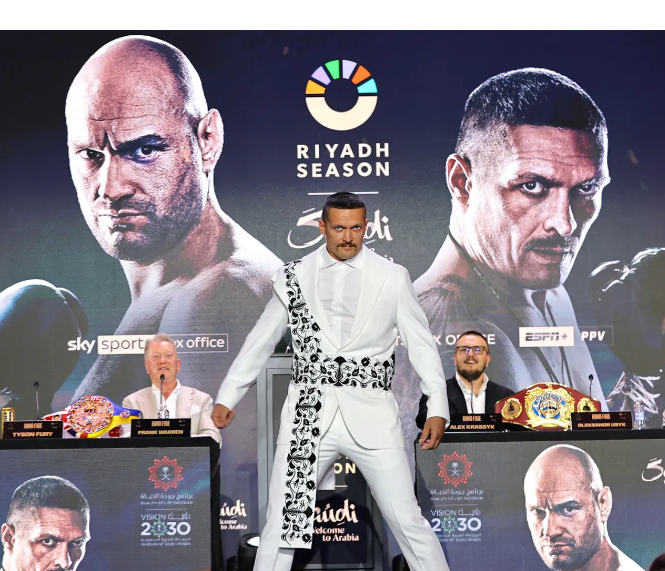
Avila Perspective, Chap. 284: Tyson Fury, Oleksandr Usyk, and Much More
Argue all you want about the appeal of other sports, only boxing grabs fans on all levels and stratum.
It’s the oldest sport that has an international swag that only the World Cup can rival once every four years. Boxing has it every year.
Heavyweights take the forefront in Saudi Arabia while lightweights battle in Southern California. It’s an all-day affair pitting champions from all parts of the world.
Tyson Fury (34-0-1, 24 KOs), the WBC and lineal heavyweight champion, finally meets Oleksandr Usyk (21-0, 15 KOs) who holds the IBF, WBA and WBO heavyweight titles on Saturday, May 18, at Riyadh. DAZN ppv, ESPN ppv, and PPV.Com will stream the massive fight card at 9 a.m. PT/ 12 p.m. ET.
It’s a rare opportunity to decide who truly is the “baddest man on the planet.” Ever since the emergence of the alphabet titles, few know the name of the heavyweight champion. Not since Mike Tyson ruled the prize ring could fans tell you the name of the champ.
Some people still think Tyson is the heavyweight champ.
Now we have England’s “Gypsy King” Fury ready to prove that he indeed is the biggest and baddest of all the heavyweights in the world. He’s got his dad head-butting people to prove it.
“I predict that somebody’s ‘0’ has got to go. And it’s going to be that team over there, unfortunately for them,” said Tyson Fury who at six-feet, nine-inches tall towers over most opponents.
Facing Fury is Usyk, the Ukrainian fighter who twice defeated Anthony Joshua for several versions of the heavyweight championship.
Though several inches shorter and much lighter in weight, Usyk has displayed mobility and agility that allows him to dart in and out of danger. Will this tactic work against Fury?
“I have a plan. It’s a better plan. And it’s a great plan,” said Usyk. “I will have the opportunity to become undisputed for a second time.”
Of course, size doesn’t always matter when it comes to heavyweights. History has taught us the bigger man doesn’t always win. From Jack Dempsey whipping Jess Willard to Joe Frazier beating Buster Mathis, size doesn’t dictate the winner when it comes to heavyweights.
Top Rank’s Bob Arum summed up the importance of this heavyweight clash.
“After this fight, there is one ‘Baddest Man on the Planet,’ the undisputed heavyweight champion. That means everything in the sport of boxing. That means everything for fans who love boxing,” said Arum.
Two other world titles fights are also planned.
IBF super featherweight titlist Joe Cordina (17-0, 9 KOs) defends against Anthony Cacace (21-1, 7 KOs).
Cordina was seen in Santa Monica, California sparring various super featherweights in preparation for this match. His last match against Texan Edwin Vazquez was a squeaker but you can never tell what the Welsh fighter will do.
Who can forget his two-round demolition of Japan’s Kenichi Ogawa?
Cruiserweights also battle. IBF titlist Jai Opetaia (24-0, 19 KOs) of Australia defends against Latvia’s Mairis Briedis (28-2, 20 KOs). This is a rematch. They fought two years ago with Opetaia winning by decision in Australia. Can Opetaia do it again in neutral territory?
PPV.Com
Headlining the PPV.COM announcing crew for the Fury-Usyk card will be Dan Canobbio, Chris Algieri and Kevin Iole. They will be commentating and also discussing the fight via text on social media.
It’s been almost a year since this this style of reporting was adopted. Fans like the opportunity to discuss the fight with the experts.
San Diego Fights
Three-division world champion Emanuel Navarrete (38-1-1, 31 KOs) attempts to become a four-division world champion when he meets Ukraine’s Denys Berinchyk (18-0, 9 KOs) for the vacant WBO lightweight title on Saturday, May 18, at Pechanga Arena in San Diego, Calif. ESPN will televise.
The Mexican fighter known as “El Vaquero” seeks to become the sixth Mexican fighter with four division world titles and join the prestigious elite. Among those accomplishing the feat are Saul “Canelo” Alvarez, Juan Manuel Marquez, Erik Morales, Jorge Arce and Leo Santa Cruz.
Navarrete barely survived his last fight with a majority draw against Robson Conceicao last November in Las Vegas. Perhaps the extra five pounds will help?
On the co-main event welterweight contender Giovani Santillan (32-0, 17 KOs) of San Diego returns home to face Georgia’s Brian Norman (25-0, 19 KOs) for the interim WBO welterweight title.
Santillan, 32, is coming off a big knockout win over Alexis Rocha last year. The southpaw has always stepped up when bigger and better competition confronts him. Can he do it again?
Norman, 23, is a hard-hitting welterweight who fought 16 times in his first two years. Many of those fights took place in Mexico. It’s a big test for him.
East L.A. Fights
Super featherweights Dariial Kuchmenov (7-0) and Daniel Lugo (5-2) meet Saturday May 18, at Salesian High School in East Los Angeles. The Elite Boxing USA promotions card begins at 6 p.m. The card features several other bouts including female fighter Mayra Ruiz.
For tickets go to www.tix.com/ticket-sales/eliteboxing/7
18th & Grand Exhibit
The final day to visit the “18th & Grand” exhibit takes place on Sunday May 19, at La Plaza De Cultura Y Artes located at 501 N. Main Street in downtown Los Angeles 90012. The exhibit is free.
Inside you will find photos and art of the Olympic Auditorium that was the center of boxing, wrestling, roller derby, and rock concerts for decades.
For boxing fans, its where the sport showcased the likes of Henry Armstrong, Baby Arizmendi, Art Aragon, Jerry Quarry, Mando Ramos, Scrap Iron Johnson, Art Hafey, and many others.
The exhibit is free of charge.
Jake Paul vs Mike Tyson
Tickets went on sale this week for the return of Iron Mike Tyson who will face Jake Paul in a heavyweight match commissioned as an actual fight.
Most Valuable Promotions will stage Tyson versus Paul along with the rematch between Katie Taylor and Amanda Serrano on July 20, at AT&T Stadium in Arlington, Texas. Netflix will stream the card live.
A number of other bouts are planned for the mega event.
Paul’s first actual boxing match took place when Tyson fought Roy Jones Jr. in Los Angeles several years ago.
“I started Jake off and I’m gonna finish him,” promised Tyson when they fight.
Paul said he respects Tyson like family.
“I love you like a father loves his son, but I must discipline you. You’re going down, man,” said Paul.
Fights to Watch
Sat. PPV.COM 9 a.m. Tyson Fury (34-0-1) vs Oleksandr Usyk (21-0).
Sat. ESPN, 7:30 p.m. Emanuel Navarrete (38-1-1) vs Denys Berinchyk (18-0).
To comment on this story in the Fight Forum CLICK HERE
-
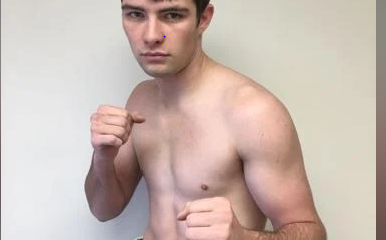
 Featured Articles4 weeks ago
Featured Articles4 weeks agoIn a Massive Upset, Dakota Linger TKOs Kurt Scoby on a Friday Night in Atlanta
-
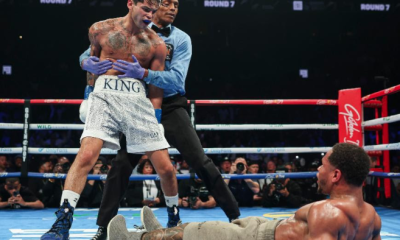
 Featured Articles4 weeks ago
Featured Articles4 weeks agoHaney-Garcia Redux with the Focus on Harvey Dock
-
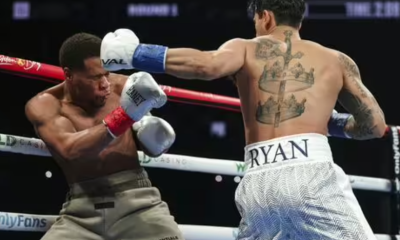
 Featured Articles4 weeks ago
Featured Articles4 weeks agoIn a Shocker, Ryan Garcia Confounds the Experts and Upsets Devin Haney
-
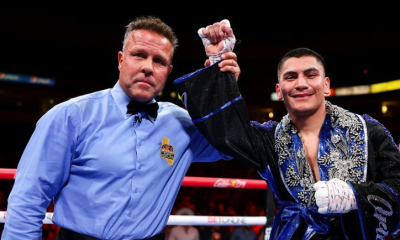
 Featured Articles3 weeks ago
Featured Articles3 weeks agoRamirez Outpoints Barthelemy and Vergil Ortiz Scores Another Fast KO in Fresno
-
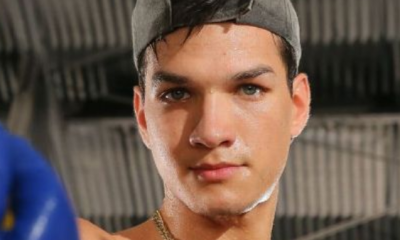
 Featured Articles3 weeks ago
Featured Articles3 weeks agoA Closer Look at Weslaco ‘Heartbreaker’ Brandon Figueroa and an Early Peek at Inoue vs Nery
-
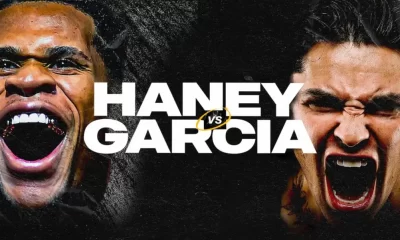
 Featured Articles4 weeks ago
Featured Articles4 weeks agoHaney and Garcia: Bipolar Opposites
-
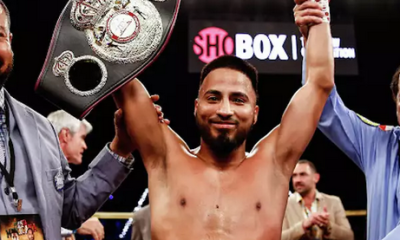
 Featured Articles3 weeks ago
Featured Articles3 weeks agoRamon Cardenas Channels Micky Ward and KOs Eduardo Ramirez on ProBox
-
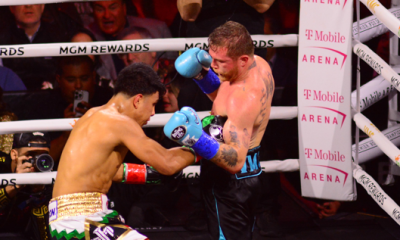
 Featured Articles2 weeks ago
Featured Articles2 weeks agoCanelo Alvarez Turns Away Jaime Munguia to Remain Undisputed King at 168

